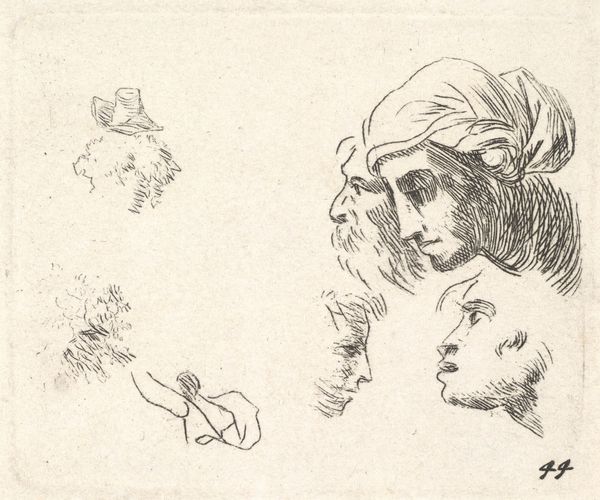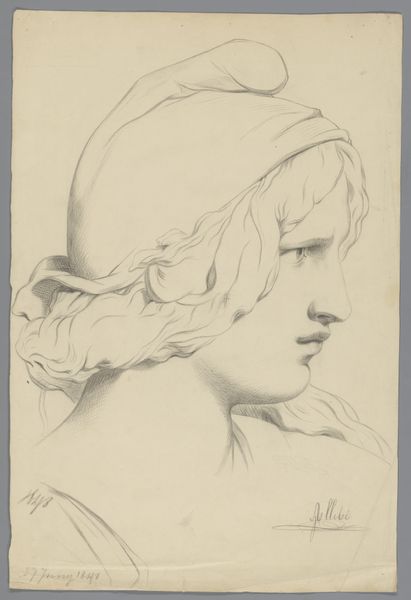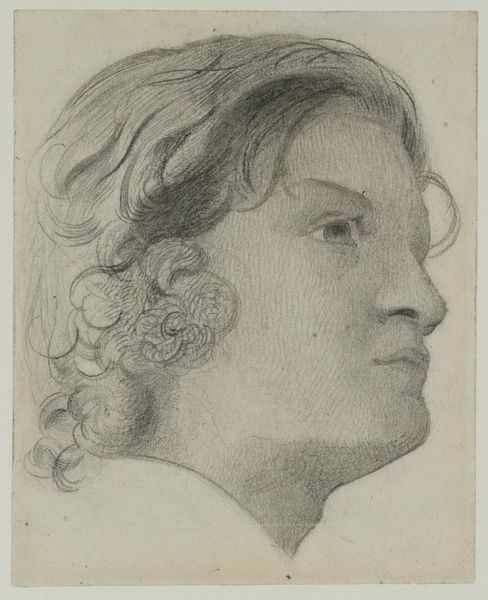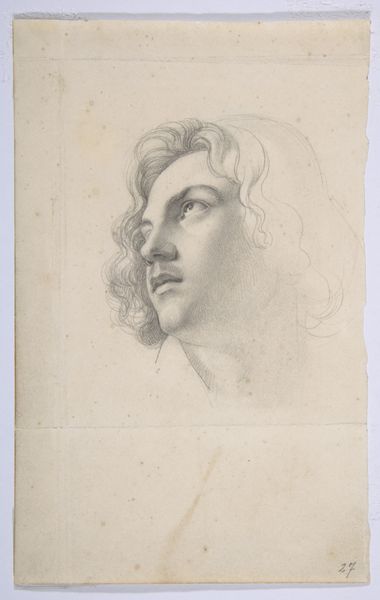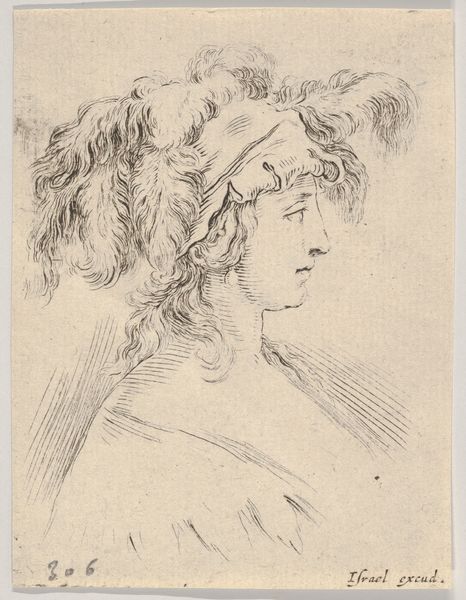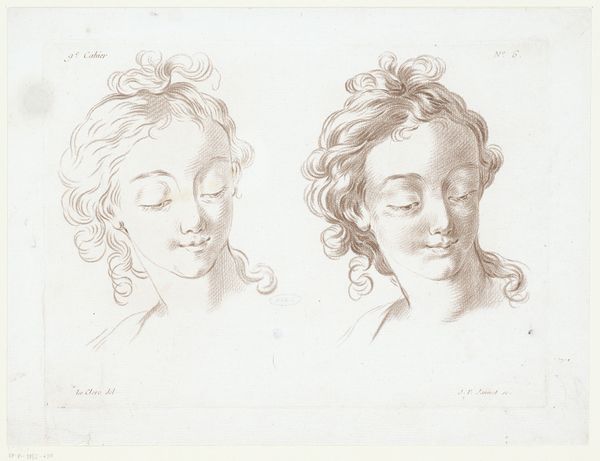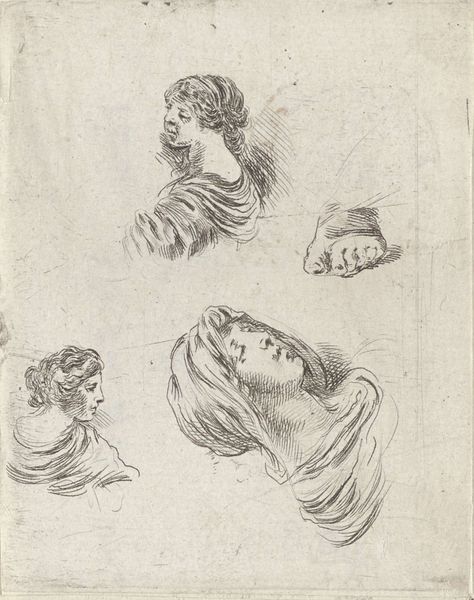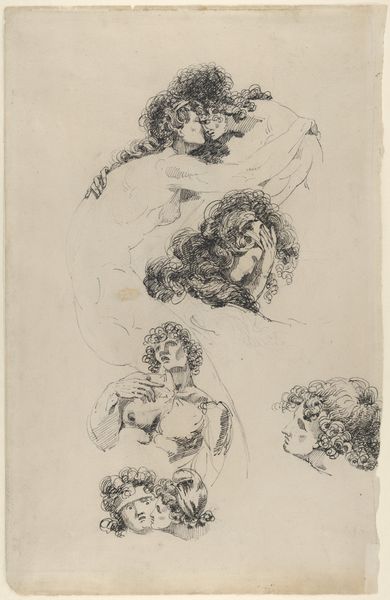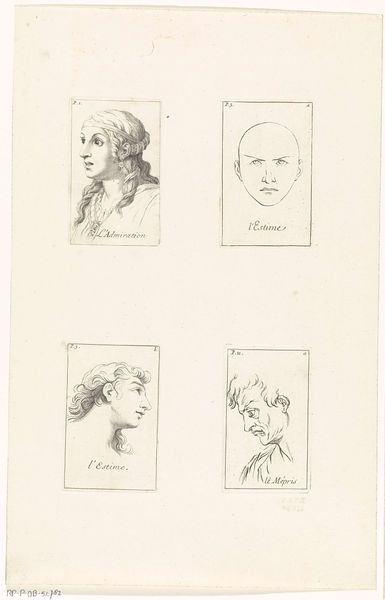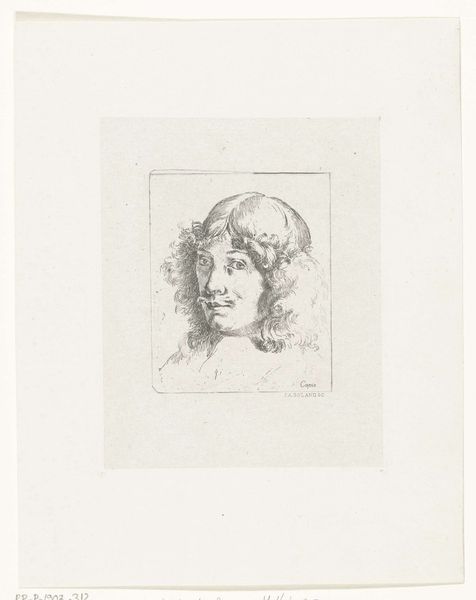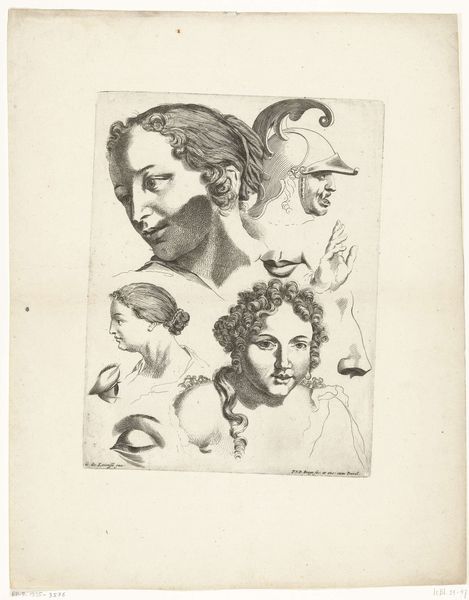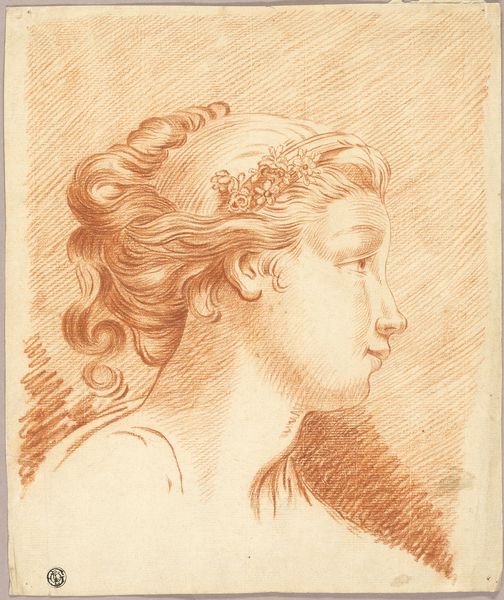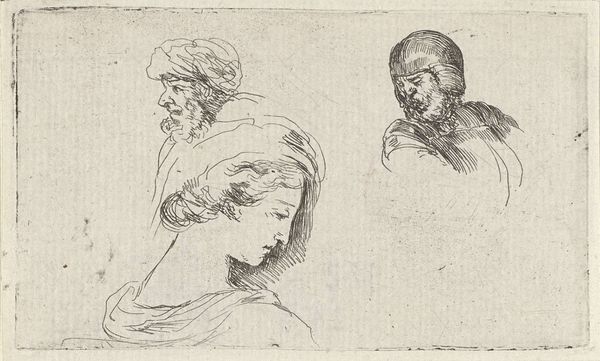
drawing, print, etching
#
portrait
#
drawing
# print
#
etching
#
figuration
#
child
#
academic-art
Dimensions: height 214 mm, width 157 mm
Copyright: Rijks Museum: Open Domain
Frederick Bloemaert made this print, "Hoofden," using etching, a printmaking technique that relies on the corrosive properties of acid. The process begins with a metal plate, usually copper, coated with a waxy, acid-resistant substance. The artist then scratches an image into the wax, exposing the metal beneath. When the plate is dipped in acid, the exposed lines are eaten away, creating grooves. The deeper the lines, the more ink they will hold. Once the plate is inked and wiped clean, a sheet of paper is laid on top, and both are run through a printing press. The pressure forces the paper into the inked grooves, transferring the image. The crisp, precise lines we see here are characteristic of this demanding process. Considered as a whole, the etching speaks to the labor involved not only in its physical creation but also in the skilled traditions and cultural significance it embodies, challenging the boundaries between fine art and craft.
Comments
No comments
Be the first to comment and join the conversation on the ultimate creative platform.
